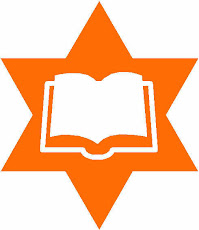We chose the following quote from Maimonides to use in organizing the structure of our Lev B’Lev Program:
עני שהוא קרובו, קודם לכל אדם; ועניי ביתו, קודמין לעניי עירו; ועניי עירו, קודמין
לעניי עיר אחרת:
“The needy who is your relative should be helped before all others; the needy in your neighborhood come before the needy in your city; the needy in your city come before the needy around the world.”
(Rambam, Gifts to the Poor, 7:13)
- the needy who is your relative --> we decided to define our synagogue communities as our “extended Jewish family” – and look for someone to discuss rabbinic discretionary funds
- the needy in your neighborhood/city --> we decided to look for a local non-Jewish organization that helped meet immediate needs
- the needy around the world --> we decided to look for a national organization that had a “bigger picture” impact.
- Our final category, we decided, would focus on the needy in Israel – as representatives of both our Jewish “family” and “around the world.”
Once we made our decision to program in this way, we ran into an unanticipated “glitch.”
- …except the rooms we had reserved wouldn't hold twice the participants
- …except doubling the size of the groups meant the presentations couldn't be as interactive
- …except that meant we needed twice the number of materials
What to do? Change the format to accept the larger numbers? Or retain the format and double every thing else? After some serious discussion, we decided to remain with the original format we had sketched out – and double the space, presenters, and resources. We also realized that greater attention would need to be focused on the logistics of moving people from one point to another, while watching the clock very carefully to keep things “on time.”
Our host site - a local Jewish Day School - was most accomodating: they cheerfully increased the number of rooms available to us. In return, we extended an invitation to their fifth grade students to join us for the program.
Only two slots remained: another national/international slot and another person to talk about rabbinic discretionary funds.
What to do? The admissions director at the Day School called me: her 14 year old daughter got involved with supporting a needy school in Kenya for her bat mitzvah project.... and has continued her involvement since her bat mitzvah. Could she participate in our program? The young woman and I spoke.... she provided me with an outline.... and she became one of our presenters!
What to do? One slot left - rabbinic discretionary funds. By this time, I'd contacted over a dozen local rabbis - none of whom were available on Sunday morning, especially with such short notice. (Our community was also having its first ever community wide adult education day on the same day!)
Finally, I called someone who's been involved in synagogue life as well as on the national level as a board member of the Jewish Reconstructionist Federation. Morah Val has been my personal teacher and mentor for over a decade: she'd been a member of my teaching staff (so I knew she was good with kids), and understands the checks and balances that are critical pieces in the financial dealings of a non-profit organization. She'd even been involved in developing the procedures for her synagogue's rabbinic discretionary fund.
In the meantime, I'd laid out the floor plan, decided how the 277 students would be divided into groups (in advance of the morning's program), how sign-in procedures would work, and how groups would move from one presenter to the next.
I got up the morning of the program and realized, I'd not prepared at all for the introductory session! Fortunately, my laptop had a copy of Debbie Friedman's "To Save a Life" on it and although my ipod decided to run a funky "reset" message that I didn't have time to deal with -- my laptop was good to go.
Participants arrived early, as requested, so that the program could begin promply at 10:00. I welcomed them and -- because the microphone wasn't working -- carried my laptop into the middle of the gym so they could hear Debbie singing that "when you save a life, you save a world." I introduced our presenters as people who were saving lives -- and worlds -- and sent the students off to their rotations.
By 10:20 - students were learning and the halls were quiet. (It was a little unnerving, the quiet...)
By 11:45, we were all back in the gym. Students had heard four presentations and were ready to decide how to allocate their tzedakah dollar. Envelopes with pre-labeled selections were distributed, along with pencils for students to mark their choices. Once we collected the envelopes, students had an opportunity to share their reflections, in response to the question: What one thing did you learn today?
- I learned that little amounts of money add up
- I learned that dogs can help people be independent
- I learned that we have so much here to be thankful for.
- I learned that there are lots of reasons why people are hungry.
- I learned that we can make a difference.
- I learned that we have to take care of others.
- I learned that we need to be careful how our tzedakah money is used.
The student wrote:
I am saving a life.... I am saving a world.




No comments:
Post a Comment